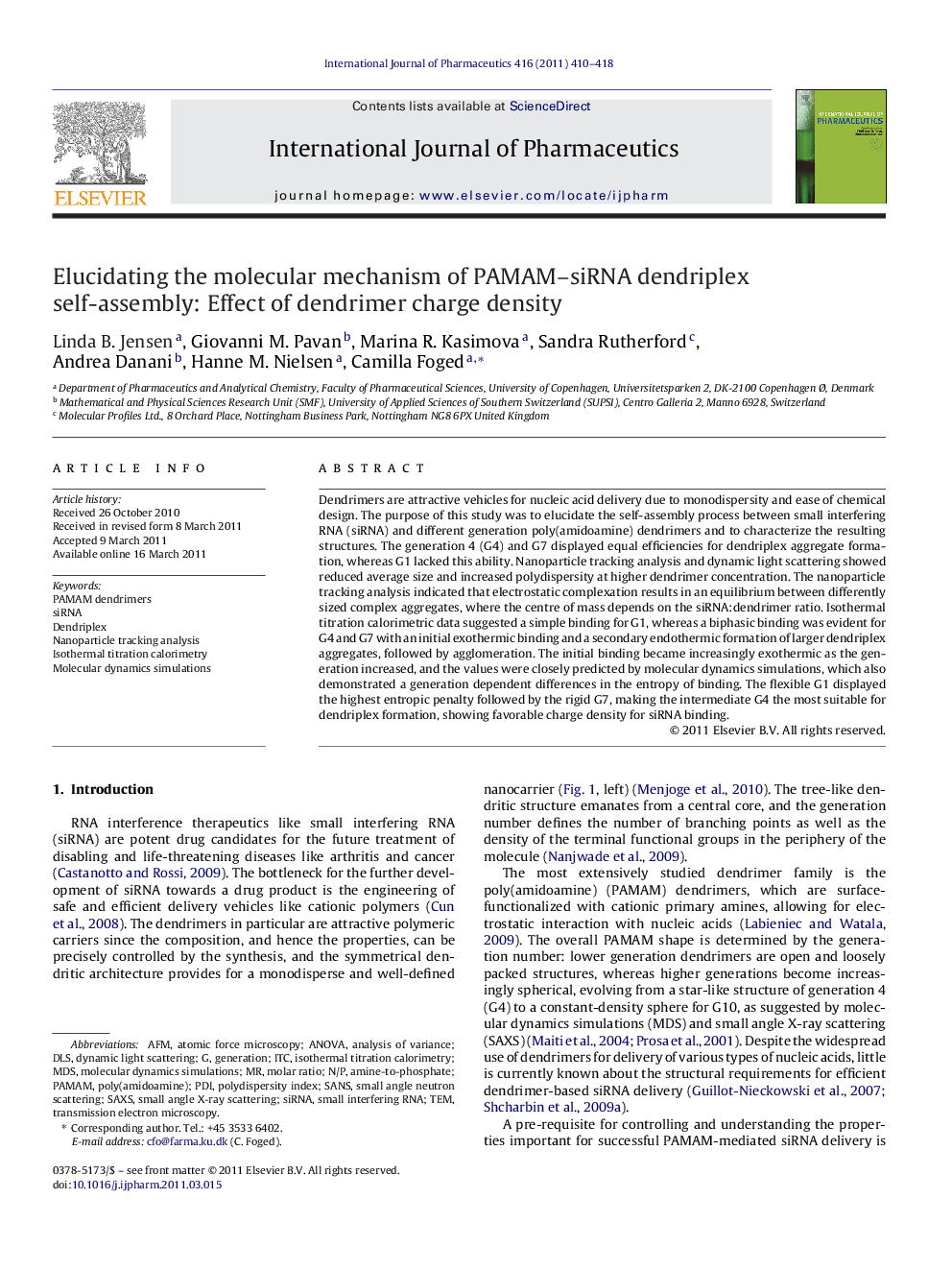| Article ID | Journal | Published Year | Pages | File Type |
|---|---|---|---|---|
| 2503412 | International Journal of Pharmaceutics | 2011 | 9 Pages |
Dendrimers are attractive vehicles for nucleic acid delivery due to monodispersity and ease of chemical design. The purpose of this study was to elucidate the self-assembly process between small interfering RNA (siRNA) and different generation poly(amidoamine) dendrimers and to characterize the resulting structures. The generation 4 (G4) and G7 displayed equal efficiencies for dendriplex aggregate formation, whereas G1 lacked this ability. Nanoparticle tracking analysis and dynamic light scattering showed reduced average size and increased polydispersity at higher dendrimer concentration. The nanoparticle tracking analysis indicated that electrostatic complexation results in an equilibrium between differently sized complex aggregates, where the centre of mass depends on the siRNA:dendrimer ratio. Isothermal titration calorimetric data suggested a simple binding for G1, whereas a biphasic binding was evident for G4 and G7 with an initial exothermic binding and a secondary endothermic formation of larger dendriplex aggregates, followed by agglomeration. The initial binding became increasingly exothermic as the generation increased, and the values were closely predicted by molecular dynamics simulations, which also demonstrated a generation dependent differences in the entropy of binding. The flexible G1 displayed the highest entropic penalty followed by the rigid G7, making the intermediate G4 the most suitable for dendriplex formation, showing favorable charge density for siRNA binding.
Graphical abstractFigure optionsDownload full-size imageDownload as PowerPoint slide
